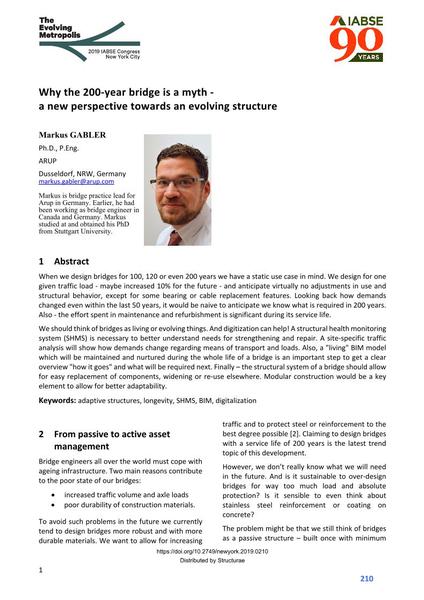Why the 200-year bridge is a myth - a new perspective towards an evolving structure

|
|
|||||||||||
Bibliographic Details
| Author(s): |
Markus Gabler
|
||||
|---|---|---|---|---|---|
| Medium: | conference paper | ||||
| Language(s): | English | ||||
| Conference: | IABSE Congress: The Evolving Metropolis, New York, NY, USA, 4-6 September 2019 | ||||
| Published in: | The Evolving Metropolis | ||||
|
|||||
| Page(s): | 210-214 | ||||
| Total no. of pages: | 5 | ||||
| DOI: | 10.2749/newyork.2019.0210 | ||||
| Abstract: |
When we design bridges for 100, 120 or even 200 years we have a static use case in mind. We design for one given traffic load - maybe increased 10% for the future - and anticipate virtually no adjustments in use and structural behavior, except for some bearing or cable replacement features. Looking back how demands changed even within the last 50 years, it would be naive to anticipate we know what is required in 200 years. Also - the effort spent in maintenance and refurbishment is significant during its service life. We should think of bridges as living or evolving things. And digitization can help! A structural health monitoring system (SHMS) is necessary to better understand needs for strengthening and repair. A site-specific traffic analysis will show how demands change regarding means of transport and loads. Also, a "living" BIM model which will be maintained and nurtured during the whole life of a bridge is an important step to get a clear overview "how it goes" and what will be required next. Finally – the structural system of a bridge should allow for easy replacement of components, widening or re-use elsewhere. Modular construction would be a key element to allow for better adaptability. |
||||
| Keywords: |
BIM longevity SHMS digitalization adaptive structures
|
||||
